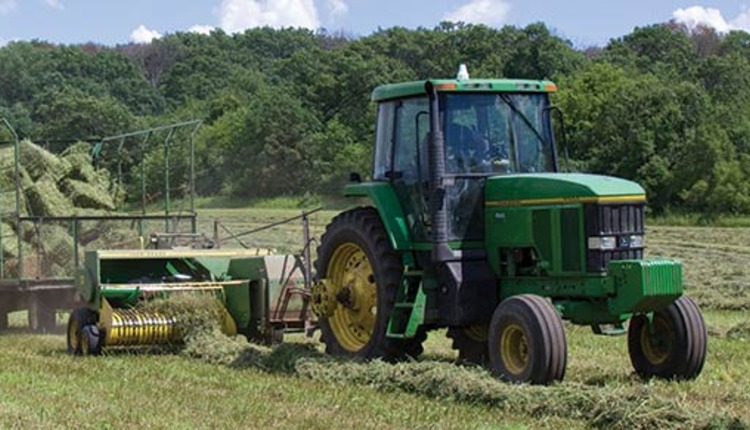Equipment values on the rise |
| By Adam Verner |
|
|
The author is a managing partner in Elite Ag LLC, Leesburg, Ga. He also is active in the family farm in Rutledge. Now that the new year is underway, we can look back and see what happened in the previous year. One farm item that saw an uptick in value was farm equipment. Pretty much across the board dealers were able to move some of their stale inventory of both new and used equipment. Some manufacturers chose to help their dealers sell some of this aged inventory, and it really changed the market. The used tractor market was good for most dealers with small utility tractors having met the previously predicted strong sales. The 100 to 200 horsepower (hp) tractor market was better than expected, and the largest improvement was on sales of 200-plus hp tractors. Holding value One interesting observation from looking at tractor prices over the past year was the fact that older, pre-emission standard models have not seen the normal decline in value as they age. Some of the older generation tractors from John Deere, Case IH, New Holland, and Massey Ferguson have even gained value in some cases. The 30-, 40-, and 50-series Case IH tractors are still worth over $50,000 even with over 6,000 hours of operational use. I looked back and found that a 1996 Case IH 7250’s original list price was only $112,000. Doing a little math to figure value-based cost, that figures to a shade over $10 per hour for a nearly 250-hp tractor. Similarly, 55-, 60-, 00-, 10-, and 20-series Deere tractors also maintained strong values. The 235 PTO (power takeoff) hp John Deere 8410 has been extremely sought after for its simplicity and durability. A 2000 model with 6,000-plus hours can easily be found for around $75,000, and the original list price for this tractor was $146,362, according to Farm Equipment Guide. This calculates to a reasonable value-based cost of $11.89 per running hour. When you compare to the values of late-model tractors, operation rates are higher. For example, a 2010 John Deere 8320R with over 4,000 hours, a standard power shift, and front duals currently lists between $100,000 and $160,000. Its manufacturer’s suggested retail price (MSRP) when new was $249,349. So, if we took the average of the current advertised prices at $130,000 and assumed 4,000 hours, it depreciated at a rate of $29.84 per hour. If we look at a late-model Case IH Magnum 340 tractor, a similar outcome occurs, assuming 4,000-plus hours of use, power shift, and front duals. The current advertised price on the three main market search engines are from $70,000 to $135,500. The bulk of the units are in the $110,000 to $125,000 range with the 2012 models having an MSRP of $247,390. This hourly operation comes to $32.47, without considering normal service work and maintenance. I know that these numbers are not perfect, but the main point is the difference in depreciation from over 10-year-old tractors compared to late model units. This is in part due to commodity prices, leasing programs, multi-unit discounts, and farmers getting into the habit of trading yearly. Not just tractors These numbers make it extremely easy to get upside down on your tractors. Your dealer can get on the wrong side just as easy. Just as it has always been, the safest and cheapest cost of owning a piece of equipment is to do just that — own it and run it. Don’t bet on trading every few years, and do your homework before purchasing. These numbers don’t just apply to tractors. Probably the worst hit market in terms of lower residual values for used equipment is the forage harvester market. Some would argue the combine and sprayer markets are more volatile, but these are much larger total markets and some loss can be absorbed by volume. The forage harvester market is a serious concern for manufacturers, dealers, and customers. These high-value machines have been sold at half of their original price in just two or three years of use. I went through several examples of value-based ownership costs and found them to be in the $170 to $180 per-hour range for just the base unit. No other piece of farm equipment can stand that much depreciation, but these are unique machines. There are only four major manufacturers, the market is relatively small, and there are no other alternatives available to do what a forage harvester can accomplish. Further, breakdowns generally have a high-value consequence. Deciding when to trade a piece of equipment has always been a gentle balance. Unfortunately, current market dynamics make always being able to operate new machines a more difficult economic reality. Even so, with a little maintenance and effort, older equipment can still be very functional. I hope to see you at the U.S. Custom Harvesters Convention in Grand Island, Neb., on January 25 through 28. This article appeared in the January 2018 issue of Hay & Forage Grower on page 24. Not a subscriber? Click to get the print magazine |
